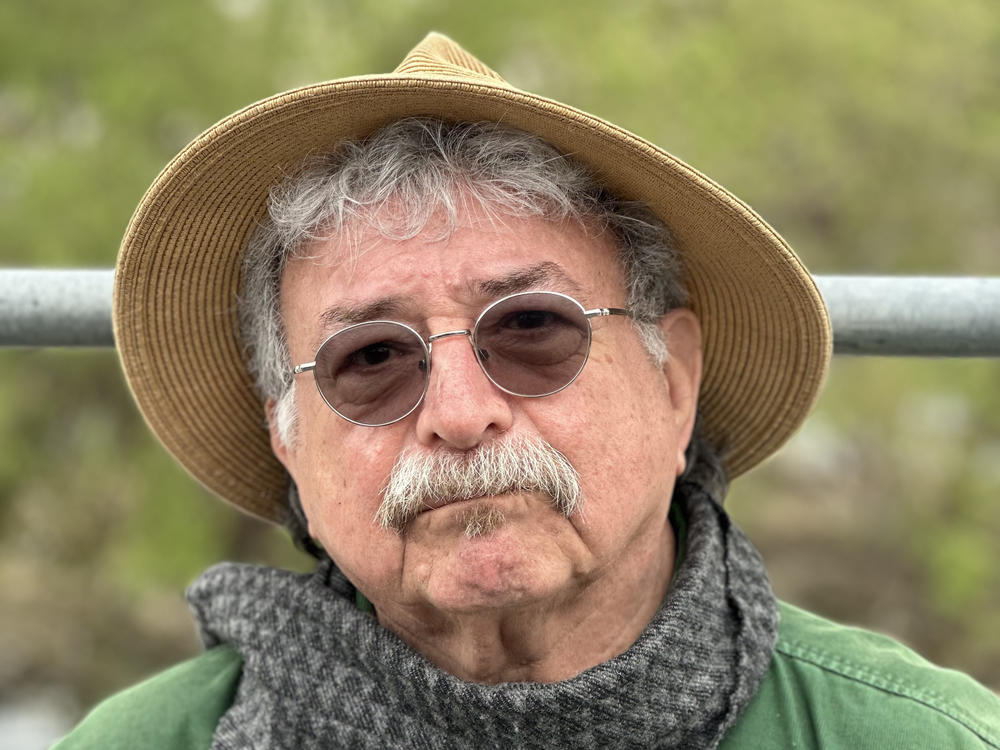Section Branding
Header Content
From utility man to one of California's foremost journalists
Primary Content
For California residents, seeing a Louis Sahagún byline usually meant they were set to read a story that would teach them something new about their own state.
But the recently retired L.A. Times reporter didn't start his 43-year career in the editorial department. Sahagún recalls responding to a job posting for a utility man.
"Well, I heard of the opening for a utility man, for a floor sweeper. I got the job, I had worked in factories, [and] had dropped out of junior college."
After sweeping floors for a while, he became a copy messenger in the editorial department. Then one day, he strolled into the office of the paper's book editor. As Sahagún recalls,
"His name was Digby Diehl. He said, 'Louis, what makes you think you could come in here and review a book for the L.A. Times, please?' And I said, 'What have you got to lose?'"
After his initial assignment writing a review of "the biggest goddarn book on the shelf", Sahagún produced nearly 200 book reviews for the Times. What followed next was a career that followed the growth of a journalist, and a city.
You're reading the Consider This newsletter, which unpacks one major news story each day. Subscribe here to get it delivered to your inbox, and listen to more from the Consider This podcast.
A rapidly changing Los Angeles
Sahagún soon turned to covering the city of Los Angeles – and his journalistic reputation was cemented when he and other Latino journalists at the L.A. Times won the 1984 Pulitzer Prize for their reporting on Latino communities in East L.A.
He also documented how drastically the city he grew up in changed into what it is today, with the interests of development and wildlife coming head to head.
Take for example, Sahagún's chronicling of the L.A. River. The native Angeleno grew up along one of its tributaries, living on a ranch with farm worker parents. His reporting has described the river's transformation from a rambunctious waterway into a straightjacketed concrete channel as a long tale of environmental battles, gentrification and displacement. In fact, his own family was told to move to make way for improvements to the river's waterways.
Sahagún says his background inspired him to keep searching for stories and subjects in the margins. And in recent decades, his reporting pushed beyond L.A., into more unknown corners of California.
"Because I grew up with working class Chicano parents. In an odd way, I felt I was writing dispatches for people like those I grew up with. And I was taking them to places that I never got to go, [like] the Owens Valley, [or] remote corners of the Mojave. And, you know, my mom and dad [would say], 'Hey, I read your story' ; Hey, man, that was great.' Yeah, yeah, that was the applause I was looking for."
A look back, and a look ahead
Sahagún says his memories of growing up surrounded by nature motivated him in his documentation of modern-day Los Angeles.
"Throughout my career, 43 years as a reporter, I've been chasing those diminishing scenes, looking for patches, remnants of those memories, what their fate might be in the way of, you know, more development today."
As for why he has chosen to retire now?
"It's just time," Sahagún says. "There comes a time I believe you have to step out of the way. You just should. Now, I'm not used to it, I have to admit. But I'm not living on deadline for the first time in 43 years. Hallelujah."
For more on Sahagún's epic Californian legacy, listen to the full episode by tapping the play button at the top of the page.

